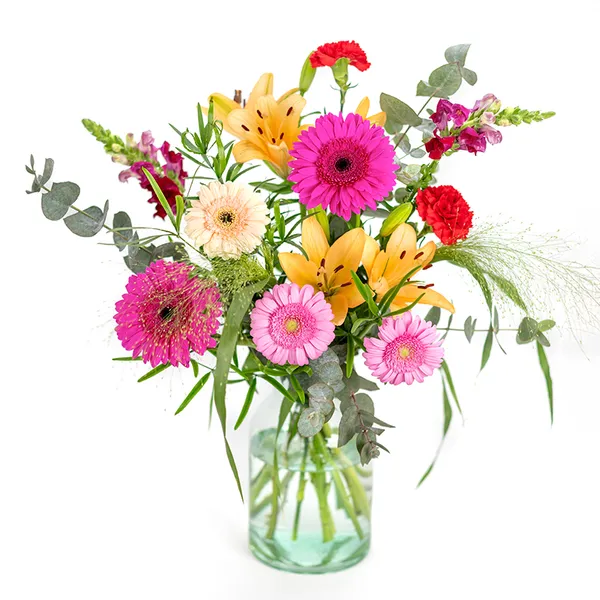Hyacinth: The Fragrant Spring Flower We All Love
Hyacinths are beloved for their dense clusters of fragrant, star-shaped flowers that bloom in a variety of stunning colours, including blue, purple, pink, white, and yellow. They symbolise rebirth, constancy, and beauty, making them an indispensable flower of springtime. Originating from the Mediterranean and Middle East, hyacinths have a rich history and are often associated with Greek mythology. Their captivating fragrance and striking appearance make them a popular choice for gardens, floral arrangements, and seasonal decorations.
COMMON NAME
Hyacinth
BOTANICAL NAME
Hyacinthus orientalis
ORIGIN
Mediterranean region and Middle East
PEOPLE ALSO CALL IT
Dutch hyacinth, Garden hyacinth
FLOWERING TIME
Spring (March to April)
ASPECT
Full sun to partial shade
SYMBOLISM
Rebirth, constancy, beauty, sorrow (in some cultures)
Care Tips for a Cut Hyacinths in a Vase
Trim Stems at an Angle: Cut the stems diagonally to enhance water uptake.
Remove Lower Leaves: Strip any leaves that would sit below the waterline to prevent bacteria growth.
Change Water Regularly: Refresh the water every two days and clean the vase to maintain freshness.
Support Stems: Use a tall vase to provide support for the heavy flower spikes.
Keep Cool: Place the arrangement in a cool but light space away from direct sunlight and heat to extend bloom life.
Symbolism & Meaning
Hyacinths carry a wide range of meanings depending on their colour. - Blue hyacinths symbolise constancy and sincerity.
- Purple hyacinths represent sorrow or forgiveness.
- Pink hyacinths convey playfulness and romance.
- White hyacinths signify purity and peace.
The flower's connection to Greek mythology adds depth to its symbolism, as it is linked to the story of Hyacinthus, whose tragic tale underscores themes of beauty and remembrance.
Types of Hyacinths
There are several types of hyacinths, with Dutch Hyacinths being the most common. These are characterised by their tightly packed flower spikes and are available in a wide range of vibrant colours. Roman Hyacinths are a more delicate variety with looser, less dense flower clusters, often used in wildflower arrangements. Grape Hyacinths (Muscari) are not true hyacinths but share a similar appearance, with tiny, bell-shaped flowers resembling a cluster of grapes.
Frequently Asked Questions About Hyacinths
Hyacinth bulbs should be planted in autumn (September to November), about 6-8 weeks before the first frost. This allows them to establish roots before winter. Plant them in well-draining soil at a depth of 10-15 cm, with the pointed end facing up. Choose a sunny to partially shaded location for the best blooms in spring.
Hyacinths are densely packed, fragrant flowers growing on upright spikes. They come in vibrant colours like blue, purple, pink, white, yellow, and red. The blooms are surrounded by narrow, strap-like green leaves and can grow up to 25-30 cm tall, making them a striking addition to gardens and flower arrangements.
A hyacinth in wax typically lasts 2-4 weeks, depending on the environment. Since waxed hyacinths rely on the energy stored in the bulb and cannot absorb water, their lifespan is shorter. Place them in a cool, bright location to maximise bloom duration, but once the flowers fade, the bulb cannot be reused.
This is what you should do with your hyacinths once they finish blooming:
- Deadhead remaining flowers to prevent seed production.
- Leave the foliage to die back naturally so the bulb can store energy for next year.
- For potted hyacinths, you can move the bulbs to the garden once the leaves have yellowed. If in the ground, they can remain there or be dug up, dried, and stored in a cool, dark place until autumn planting.
The hyacinth is poisonous as a whole, but mainly the bulbs and seeds. The plant is not suitable for consumption and can cause abdominal pain, itching and vomiting if ingested.

